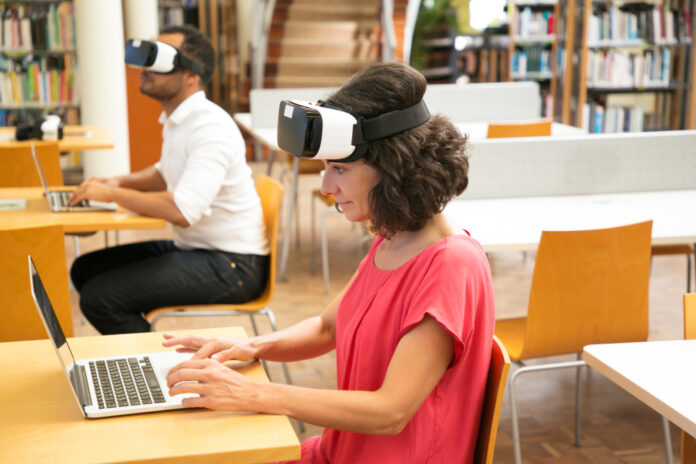Tech Learning Gadgets are reshaping how students and professionals acquire skills, retain knowledge, and stay productive. From programmable micro-controllers to AI-powered study apps, the right gadgets can turn a crowded study hour into an efficient, focused learning session.
I still remember Ananya, a first-year engineering student, who struggled to keep up with lectures while juggling a part-time job. She invested in a dedicated learning tablet and a smart stylus, and within a semester her note-taking, revision speed, and concept retention improved dramatically. That personal turnaround highlights the practical value of thoughtfully chosen tech learning gadgets in real life.
Table of Contents
ToggleWhy Tech Learning Gadgets Matter for Modern Learners
The learning landscape has changed. Classrooms are hybrid, careers demand continuous reskilling, and attention spans are under siege. Tech learning gadgets provide tangible benefits: they reduce friction, support multisensory learning, and enable practice at scale.
For students, gadgets speed up homework, enable interactive practice, and make collaborative work seamless. For professionals, gadgets offer on-the-go learning, micro-credentials, and tools to prototype ideas quickly. Across both groups, tech learning gadgets level the playing field by making complex subjects more approachable.
Tech Learning Gadgets: Core Categories to Know
Understanding gadget types helps you choose what fits your goals. There are study-first devices, productivity enhancers, and creation tools — each serving different learning phases.
Tablets and e-ink readers simplify reading and annotation. Digital pens and smart notebooks bridge handwritten notes with cloud search. Micro-controllers and coding kits turn abstract programming into tactile projects. Noise-cancelling headphones and focused-work lamps improve the environment. Language translators and speech-to-text tools accelerate communication practice. All these categories fall under the umbrella of tech learning gadgets and work together to create a cohesive learning stack.
Tech Learning Gadgets for Students: Practical Picks
Students often need portability, versatility, and affordability. The following gadgets make everyday studying easier and more effective.
A mid-range tablet with a responsive stylus replaces paper notebooks while supporting multimedia study material. It lets students annotate PDFs, record lectures, and sketch diagrams during labs. An e-ink reader is ideal for heavy reading without eye strain, while an e-ink note device supports long-form handwritten revision that syncs to the cloud.
For STEM learners, micro:bit or Arduino starter kits foster hands-on coding and electronics skills. These kits are perfect for turning theoretical lessons into project-based learning, which reinforces concepts far better than passive reading.
Noise-cancelling headphones help maintain concentration in busy dorms or open libraries. Pair them with a focus app that uses timed work intervals to make study sessions more productive. A pocket translator and language-learning earbuds accelerate spoken practice for students learning foreign languages.
Tech Learning Gadgets for Professionals: Efficiency and Growth
Professionals need tools that support rapid learning, on-the-job application, and prototyping. Portable laptops with long battery life and tablet hybrids provide flexibility for reading and hands-on sketching.
Smartpens and OCR-capable note apps allow professionals to capture meeting insights and convert them into searchable knowledge banks. Wearables that monitor focus and stress can remind busy workers to take strategic breaks, preserving long-term productivity.
For those reskilling in tech, single-board computers and cloud-connected dev kits speed learning by letting professionals build small, real-world projects. Business courses paired with simulation apps and interactive case studies turn abstract frameworks into practical skills.
How Tech Learning Gadgets Improve Retention and Practice
The science of learning supports multisensory experiences. Tech learning gadgets enable active recall, spaced repetition, and immediate feedback — the pillars of durable learning.
Digital flashcard apps synchronized with smart devices create spaced review schedules. Coding platforms that work with micro-controllers give instant hardware feedback, deepening understanding of programming loops and sensors. Audio recording features let learners revisit lectures, and smart tags on notes help reconstruct the context for better memory retrieval.
When gadgets make practice easier and feedback immediate, learners adopt deliberate practice habits more naturally.
Story: From Overwhelm to Mastery with Smart Tools
Ravi, a mid-career marketer, wanted to learn data visualization. He invested in a convertible laptop, a data visualization course subscription, and a portable drawing tablet. By using the tablet to sketch layouts and the laptop to prototype charts, his learning moved from theoretical to applied. Within months he presented an interactive dashboard to his team — a concrete outcome supported by tech learning gadgets and focused practice.
Choosing the Right Tech Learning Gadgets: A Simple Framework
Choosing gadgets requires aligning features with learning goals. Consider three questions: What skill am I trying to build? Where will I use this gadget? How much time will I realistically dedicate?
If your goal is note-driven comprehension, invest in a tablet with stylus and cloud-sync. If hands-on experimentation is the goal, a coding kit and small sensors make sense. For audio-centric learning—languages or lectures—prioritize high-quality earbuds with transcription features.
Also weigh total cost of ownership: accessories, software subscriptions, and replacement parts matter. The smartest tech learning gadgets are the ones you actually use consistently.
Accessibility and Inclusive Design in Tech Learning Gadgets
Good gadgets consider accessibility. Adjustable text sizes, screen readers, voice commands, and tactile feedback expand learning opportunities for diverse learners.
Devices that offer captioning, multi-modal input, and alternative navigation are more inclusive. Educators and organizations should select tech learning gadgets that reduce barriers and support multiple learning styles.
Integrating Gadgets into a Learning Routine
A device alone won’t transform learning; routines do. Pair gadgets with structured habits: short focused sessions, review schedules, and project-based milestones.
Start each study session with a clear objective and a single gadget focus. For example, a 45-minute session could involve reading on an e-ink device for twenty minutes, then switching to a tablet for annotated notes and a quiz. Switching modes prevents cognitive fatigue and leverages each gadget’s strengths.
Security, Privacy, and Data Ownership
Tech learning gadgets collect data, from notes to biometric markers. Prioritize devices and apps that respect privacy and provide clear terms on data ownership. Use local storage options when confidentiality matters, and enable strong authentication on cloud accounts.
Organizations that supply gadgets should include privacy training for users, ensuring sensitive project notes and student data remain protected.
Cost-Effective Ways to Build a Learning Stack
Not everyone needs premium gear. Many effective tech learning gadgets come at budget-friendly prices. Open-source micro-controllers, refurbished tablets, and free app tiers can form a powerful stack without breaking the bank.
Libraries and campus maker-spaces often loan devices, offering low-cost access to specialized gadgets. Flip the ownership model: start with rentals or short trials before committing to long-term purchases.
Measuring Return On Learning with Gadgets
To justify an investment, track outcomes: faster task completion, improved grades, course completion, or new job responsibilities. Small experiments help: try a gadget for a semester and measure changes in productivity and comprehension.
Managers and educators should treat gadgets as interventions. Collect qualitative feedback and simple metrics like time-on-task to evaluate effectiveness.
Tech Learning Gadgets for Collaborative Learning
Collaboration benefits from shared digital spaces. Cloud whiteboards, synchronized note apps, and live coding platforms enable teams to co-create in real time.
Pair a collaborative tablet with a shared project board to simulate collaborative lab work or group presentations. Such setups mirror workplace collaboration and teach communication alongside technical skills.
Practical Maintenance and Lifespan Tips
Extend the life of tech learning gadgets with simple routines: keep firmware updated, use protective cases, and charge batteries on recommended cycles. Replace consumables like stylus tips and sensor batteries proactively.
Backing up notes and project files to multiple locations prevents data loss that can derail learning progress.
Future Trends in Tech Learning Gadgets
Emerging tech will further change learning. Augmented reality (AR) overlays can turn any environment into an interactive lab. AI tutors will create adaptive practice paths tailored to individual strengths and weaknesses. Wearables will offer deeper insights into cognitive load and recovery.
These trends point to more personalized, context-aware learning enabled by next-generation tech learning gadgets.
Pedagogical Roles: How Educators Can Use Gadgets Effectively
Educators should scaffold gadget usage: introduce one tool at a time, demonstrate best practices, and design assignments that require using the device. Provide rubrics that value process as much as product to emphasize learning behaviors.
When instructors model device use and integrate gadgets into assessments, students perceive them as essential learning tools rather than optional extras.
Pitfalls to Avoid with Tech Learning Gadgets
Avoid gadget overload. Too many devices create friction and fragment attention. Choose a compact, interoperable stack and commit to it. Beware of shiny-object syndrome: new gadgets can distract from core learning goals.
Also, don’t rely solely on gadgets for motivation. Pair tools with social accountability and mentorship to sustain long-term engagement.
Quick Checklist Before Buying Tech Learning Gadgets
Clarify your learning goal, verify compatibility with existing devices, check battery life and warranty, read accessibility and privacy policies, and identify potential subscriptions. Test devices where possible and prioritize repairability.
This pragmatic approach reduces buyer’s remorse and ensures the gadgets you purchase actually support learning.
Real-World Example: Campus Rollout of Learning Devices
A university deployed tablets with styluses to first-year cohorts alongside a short orientation on digital note-taking. Faculty integrated tablet-based activities into assignments. Within a year, students reported faster revision cycles and higher engagement in active-learning sessions. The initiative succeeded because it combined device access with pedagogical alignment — a core principle when deploying tech learning gadgets at scale.
Final Practical Tips for Lifelong Learners
Treat tech learning gadgets as enablers, not crutches. Pair them with deliberate practice, community learning, and consistent reflection. Periodically audit your toolkit to retire gadgets that no longer serve clear learning objectives and invest in those that do.
The right combination of tools, routines, and intent transforms how we learn — and Tech Learning Gadgets are at the center of that transformation.
Read also:
addicting games
games at berkeley
xbox cloud gaming (beta)
games berkeley
xbox cloud gaming beta
sri lanka national cricket team vs bangladesh national cricket team match scorecard
pakistan national cricket team vs australian men’s cricket team match scorecard
south africa national cricket team vs pakistan national cricket team

